
Marie Versini was born in Paris in 1940. She was capivating as the seamstress on her way to the gallows with Dirk Bogarde in “A Tale of Two Cities.




European Actors

Marie Versini was born in Paris in 1940. She was capivating as the seamstress on her way to the gallows with Dirk Bogarde in “A Tale of Two Cities.




Silvana Mangano was born in Rome in 1930 of an English mother and an Italian father. She came to international fame for her role in “Bitter Rice” in 1939. Her other films include “Anna” in 1951, “Gold of Naples”, “Mambo”, “Death in Venice” and “Conversation Piece”. She died in 1989.
TCM Overview:
Beautiful leading lady who came to international prominence as a struggling, scantily-clad peasant in Giuseppe De Santis’ neorealist drama, “Bitter Rice” (1949). Mangano later proved her ability in films by such directors as Vittorio De Sica (“Gold of Naples” 1954), Pier Paolo Pasolini (“Teorema” 1968) and Luchino Visconti (“Death in Venice” 1971). She married producer Dino DeLaurentiis in 1949 and appeared in a number of his films, as well as one–“Dune” (1985)–produced by their daughter Raffaella DeLaurentiis.











Silvana Mangano, the Italian film actress who created a sensation as a passionately earthy peasant in ”Bitter Rice” in 1948 and shaped increasingly compelling characterizations in later movies, died yesterday in Madrid. She was 59 years old and had been hospitalized in a coma for several days.
Representatives of the Luz Hospital in Madrid told The Associated Press that the actress had suffered a heart attack there during surgery for a tumor between her lungs. She had been suffering from cancer for several years.
Miss Mangano’s three daughters, Veronica, Rafaella and Francesca, flew to Madrid to be with her, the Spanish National Radio reported. Federico, the actress’s only son, died in a plane crash in 1981 while making a film in Alaska, prompting her to go into seclusion for several years.
Their father is Dino De Laurentiis, the producer whom Miss Mangano married in 1949 soon after the release of ”Bitter Rice,” his first international success. They avoided publicity in their private lives and seemed happy, but they separated in 1983 and began divorce proceedings last year. Made 30 Films
The actress worked with many of Italy’s leading directors, including Alberto Lattuada, Vittorio De Sica, Pier Paolo Pasolini and Luchino Visconti, but she made only 30 films, preferring to spend time with her family.
Her roles included a sensitive prostitute in ”Gold of Naples” (1954), a loveless movie goddess in ”The Witches” (1967), a cool aristocrat in ”Death in Venice” (1971) and the wealthy, rejected wife of Marcello Mastroianni in ”Dark Eyes” (1987). Other films were ”Ulysses” (as both Penelope and Circe, 1954), ”Barabbas” (1961), ”Oedipus Rex” (1967), ”Ludwig” (1973) and ”Conversation Piece” (1975).
Miss Mangano was born in Rome on April 21, 1930, one of four children of Amedeo Mangano, a railroad employee, and an Englishwoman, the former Ivy Webb. She studied dancing, won the title Miss Rome 1946 in a beauty contest, modeled and got minor parts in several movies before gaining the leading role in ”Bitter Rice” as a lustful rice harvester in the Po Valley. Contrast to Private Life














Bosley Crowther of The New York Times reflected international approval in hailing her as a sensation. He said she embodied ”Anna Magnani minus 15 years, Ingrid Bergman with a Latin disposition and Rita Hayworth plus 25 pounds.”
David Thomson, the film historian and critic, said in recalling ”Bitter Rice” that its social comment ”was swamped by its popular elements, chief of which was Mangano, her skirts tucked up, standing in the rice fields and leaving no doubts in the viewer’s mind.”
Miss Mangano’s sensual film image contrasted with her private life, in which she wore conservative clothes and no makeup. In her maturity, she was a cool, sculptured, high-fashion beauty whose penchants included tennis, horseback riding and well-prepared food.
Besides her children, survivors include two sisters, Patrizia and Natasha.
The hospital gave no information regarding funeral or memorial services. The Spanish national news agency EFE quoted a family representative as saying Miss Mangano’s body would be cremated today and the remains sent to New York to be placed next to those of her son
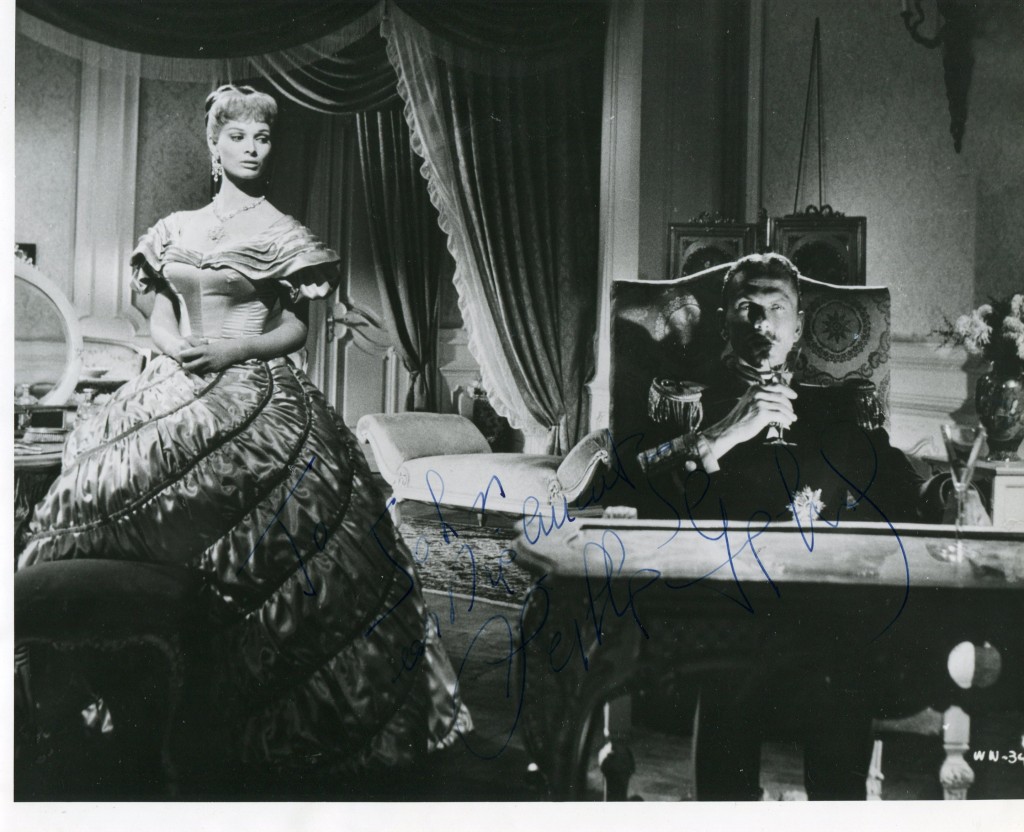
Scilla Gabel was born in Riminini in Italy in 1938. Her movie debut was in “Tarzan’s Greatest Adventure” in 1959. Her other credits include “Modesty Blaise” in 1966 and “Target for Killing”.
Page on “Glamour Girls of the Silver Screen” here.
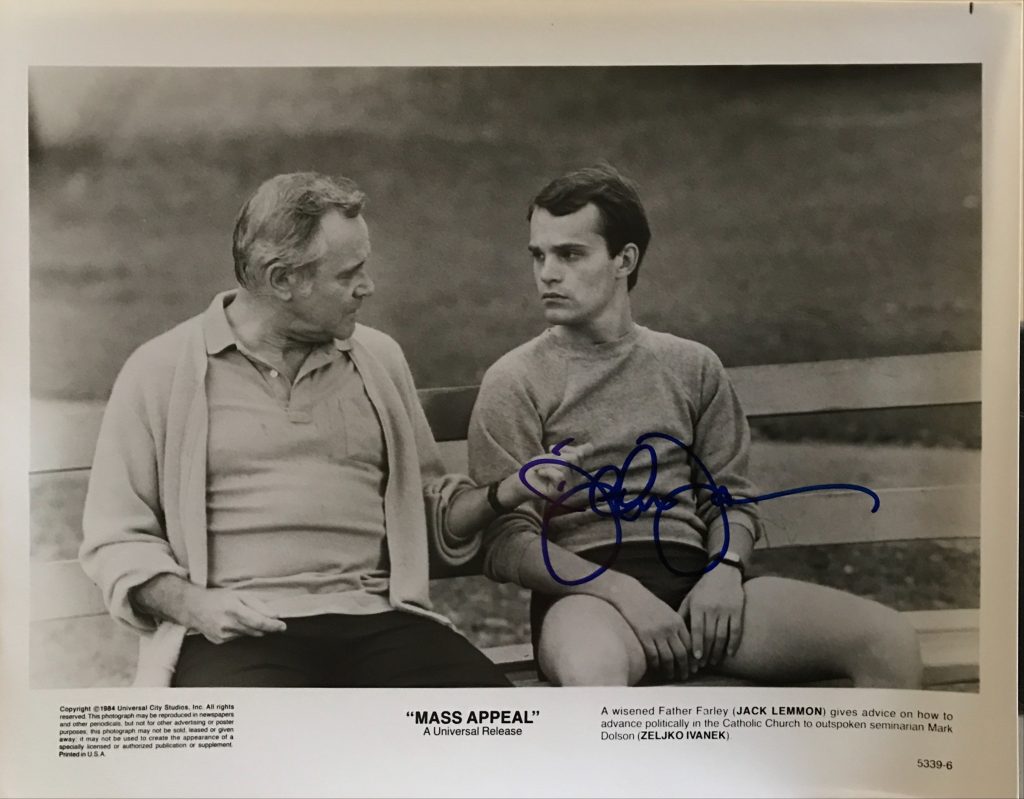
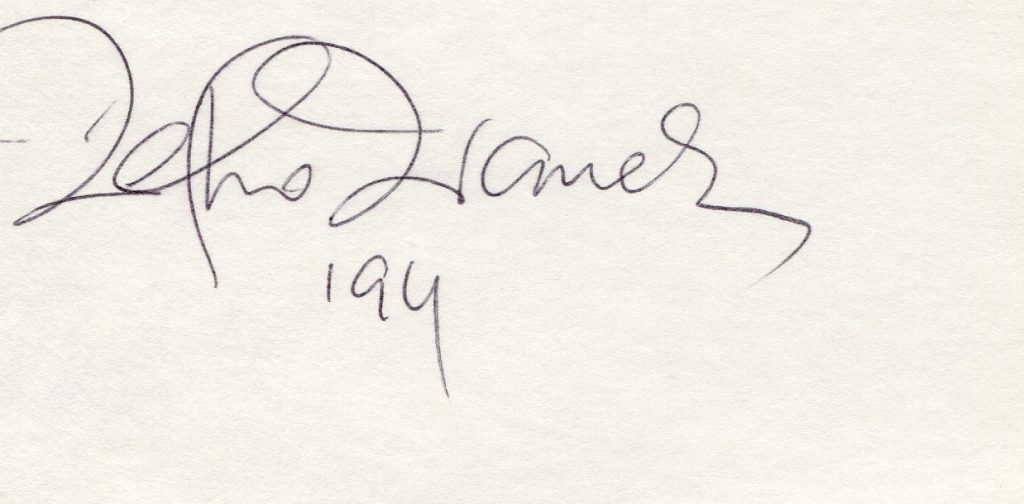
Zeljko Ivanek was born in Slovenia in 1957. When he was three years old, his parents emigrated to the U.S. His movie debut came in 1982 in “The Soldier”. Another early film credit was “Mass Appeal” with Jack Lemmon. He has had an extensive career on the stage and in television. He was part of the cast of the long running HBO series “Oz”.
TCM overview:
Even though most people could not pronounce Zeljko Ivanek’s name, there was no denying he made an impression every time he appeared onscreen. Already an accomplished stage star, Ivanek appeared in several film and TV projects, often as conniving and evil men who wore three-piece suits. His performance as a smooth-talking Southern lawyer in “Damages” (FX, 2007- ) earned the Slovenian-born actor his first time Emmy Award nomination and win in 2008, where he went up against his co-star Ted Danson for Best Supporting Actor in a Drama Series.
Zeljko Ivanek (pronounced Zhel-ko Ee-vah-nik) was born on Aug. 15, 1957 in Ljubljana, Slovenia (then a part of Yugoslavia). The actor was just three years old when his parents brought him to the United States in 1960. Ivanek graduated from Yale University in 1978 before attending the London Academy of Music and Dramatic Art. “I started in theater in New York, and it’s a smaller community, and it feels like you know the ins and outs more,” Ivanek said. His theater training paid off in 1981, when the actor won the Drama Desk Award for Outstanding Featured Actor in a Play, for a production of Caryl Churchill’s “Cloud Nine.” A year later, he originated the role of Hally in the Athol Fugard play, “Master Harold and the Boys.”
Broadway gave Ivanek an outlet to showcase his exceptional acting skills, even honoring him with multiple Tony Award nominations, including one for his performance in the original production of “Brighton Beach Memoirs” (1983). He also received critical praise – and more Tony nods – for “Two Shakespearean Actors” (1992) and for playing Captain Queeg in “The Caine Mutiny Court Martial” (2006). The marquee star never thought about changing his name, stating that even though it had been suggested, “it always seemed very peculiar to have my parents see me using a different name.”
Ivanek’s first feature film appearance was playing a hitchhiker in “Tex” (1982). Since that time, the actor’s roles got bigger and meatier, with unforgettable turns as Bobby Kennedy in “The Rat Pack” (1998), a District Attorney in Lars Von Trier’s heartbreaking “Dancer in the Dark” (2000), and a doctor in “Hannibal” (2001). Von Trier was so enthralled by the passion and depth Ivanek brought his characters that he cast the actor in two more films, “Dogville” (2003) and “Manderlay” (2005).
Perhaps even more than his stage and film appearances, Ivanek was mostly recognized for his extensive and impressive television resume. While still acting on Broadway, Ivanek joined the cast of the mystery soap series “The Edge of Night” (CBS, 1956-1975, ABC, 1975-1984) as Sammy Wheaton. He had supporting roles throughout the 1980s in shows like “St. Elsewhere” (NBC, 1982-88) and “L.A. Law” (NBC, 1986-1994) before landing a recurring role as prosecuting attorney Ed Danvers in “Homicide: Life on the Street” (NBC, 1993-99).
In 1998, Ivanek was cast as Astronaut Ken Mattingly in the Emmy and Golden Globe award-winning miniseries “From the Earth to the Moon” (HBO). He reprised his role of Ed Danvers for the 2000 film “Homicide, and two years later, Ivanek got cast in another recurring role – this time as Andre Drazen, the man who plotted to kill Senator David Palmer (Dennis Haysbert) and frame Jack Bauer ( Keifer Sutherland) in “24” (FOX, 2001- ).
Ivanek was not one to take on one acting job at a time. While acting in “24,” he also appeared on episodes of “The Practice” (ABC, 1997-2004), “The Twilight Zone” (UPN, 2002-03), and the gritty prison drama “Oz” (HBO, 1997-2003). In the latter, Ivanek played chillingly evil Governor James Devlin, the inmate-hated politician who advocated “No perks for prisoners.” The year 2007 proved to be a big year for the Slovenian star, playing FBI Agent Molina in the film “Live Free or Die Hard” with Bruce Willis, and getting cast as the charmingly manipulative Southern lawyer Ray Fiske in the FX series “Damages.”
Though his character ended up committing suicide in the first season of the show, Ivanek’s performance caught the attention of Emmy voters, who gave him the statue in 2008. Asked about the irony of getting nominated for a role he could not reprise, the actor said, “It was just such a great part that when it happened, it was a wonderful way to end it and put a cap on it. It was such a nice bow to tie it all up.” That same year, Ivanek portrayed Pennsylvania representative John Dickinson in the HBO miniseries “John Adams,” opposite Paul Giamatti and Laura Linney.

Leticia Roman was born in 1941 in Rome. Her career spanned the 1960’s and included “Pirates of Tortuga” in 1961 and “The Spy in the Green Hat” in 1967 which was made in Hollywood.
IMDB entry:
Letícia Román was born on August 12, 1941 in Rome, Lazio, Italy as Letizia Novarese. She is an actress, known for The Evil Eye (1963), G.I. Blues (1960) and The Reunion(1963). Daughter of costume designer Vittorio Nino Novarese and actress Giuliana Gianni.










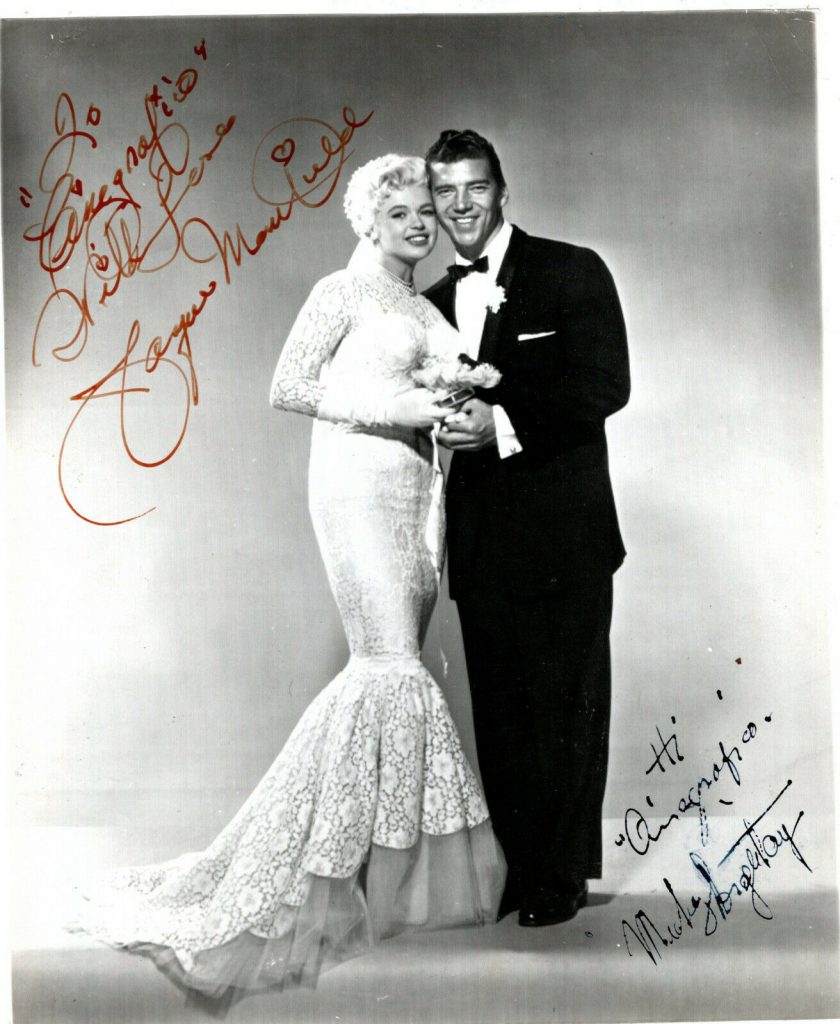
Mickey Hargitay
Mickey Hargitay was born in 1926 in Budapest, Hungary. He was an underground fighter during World War Two. He came to the U.S. after the end of the war. He won the “Mr Universe” bodybuilding title in 1955. Mae West used him in her nightclub act. His first major film role was “Will Success Spoil Rock Hunter” in 1957. The film starred his future wife Jayne Mansfield. His other film credits include “The Love of Hercules” in 1960 and “Promises, Promises” in 1963. He died in Los Angeles in 2006. The actress Mariska Hargitay is the daughter of Hargitay and Jayne Mansfield.
Tom Vallance’s “Independent” obituary:
A champion body-builder, the Hungarian-born Mickey Hargitay won the Mr Universe title in 1955, and became one of the muscle-men backing Mae West in her renowned night-club act, but he is best remembered as the actor husband of Jayne Mansfield.
Mansfield was the buxom blonde who made a career out of parodying Marilyn Monroe, notably in the George Axelrod’s Broadway satire on Hollywood Will Success Spoil Rock Hunter? The year after her sensational début in the play, she married Hargitay, who appeared with her in the film version.
The son of an acrobat, he was born Miklos Hargitay in Budapest in 1926. Raised as an athlete, he took part in his father’s stage act, and also became a fine soccer player and a champion speed-skater. After fighting with the resistance in the Second World War, he emigrated to the United States and settled in Indianapolis, working as a plumber and carpenter while attending gym and pursuing his body-building activities. He also performed an adagio act in night-clubs with his first wife, Mary Birge, from whom he was divorced in 1956.
He started competing in “body beautiful” competitions at the start of the Fifties, and won local events (Mr Indianapolis, Mr Eastern America) before becoming “Mr Universe”. His victory in the competition was described by Arnold Schwarzenegger as inspirational:
Body-building was dominated by American champions; there was no hope for anyone else.
That someone from central Europe became Mr Universe gave hope for someone like myself and others to dream about.
Hargitay is credited with stimulating the enormous interest in physical culture prevalent in the US of the Fifties. He became a pin-up in fitness magazines, and, shortly after he won the title, Hargitay’s photograph was noticed by the ageing, legendary vamp Mae West on the cover of Strength and Health magazine, and she asked him to join her troupe of muscle-men in her Las Vegas night-club act, The Mae West Revue.
The act, in which West was backed by a line of muscular young men clothed only in leopard-skin loincloths, provoked derision from many critics, but the public loved it. It went on to break attendance records at the Latin Quarter in New York, Variety commenting,
The femme ringsiders give blushing gasps of admiration to the muscle-men, while their paunchy
and/or anaemic escorts cringe before the displays of physical excellence.
Hargitay was spotted in the show by Jayne Mansfield, who, when asked what she would like to have, reputedly answered, “I’ll have a steak and the man on the left.” Their subsequent romance attracted publicity when Hargitay claimed that West had jealously taken away his lines of dialogue in the show, and a fist fight between Hargitay and one of West’s other muscle-men ensued. Hargitay and Mansfield were married in 1958, lived in a Beverly Hills mansion with a heart-shaped swimming pool and 13 bathrooms, and had three children before divorcing in 1964.
The couple also appeared in four films together, notably the sparkling screen version of Will Success Spoil Rock Hunter? (1957), substantially rewritten by the director Frank Tashlin, in which Hargitay was Mansfield’s boyfriend, a television star of jungle adventures. When Mansfield’s career was fading, they appeared in less distinguished films, including a witless comedy about wife-swapping on a cruise, Promises! Promises! (1963). Several films that they made in Italy included two in which they appeared together, The Loves of Hercules (1960) and Primitive Love (1966), while Hargitay alone starred as the sadistic owner of a castle complete with torture chamber in Bloody Pit of Horror (1965), supposedly based on the writings of the Marquis de Sade. Hargitay made over a dozen more films – westerns and horror movies – in Italy until 1973.
Mansfield died in a car crash in 1967, and in 1980 the couple were the subject of a television movie, The Jayne Mansfield Story (1980), with Loni Anderson as Mansfield and Arnold Schwarzenegger as Hargitay. Now Governor of California, Schwarzenegger said this week:
Mickey was such an inspiration and always had such a positive attitude. He was a role model of mine for being a successful immigrant who came to this country and pursued his dreams.
In recent years Hargitay had a new career in real estate. His actress daughter Mariska received an Emmy Award last month for her recurring role as Detective Olivia Benson in Law and Order: Special Victims Unit, and in 2003 Hargitay acted with her in an episode of the show.
“I enjoyed my career,” he recently said. “I never wanted to be any more than what I was, and I had fun doing it.”
Tom Vallance
The above “Independent” obituary can also be accessed online here.
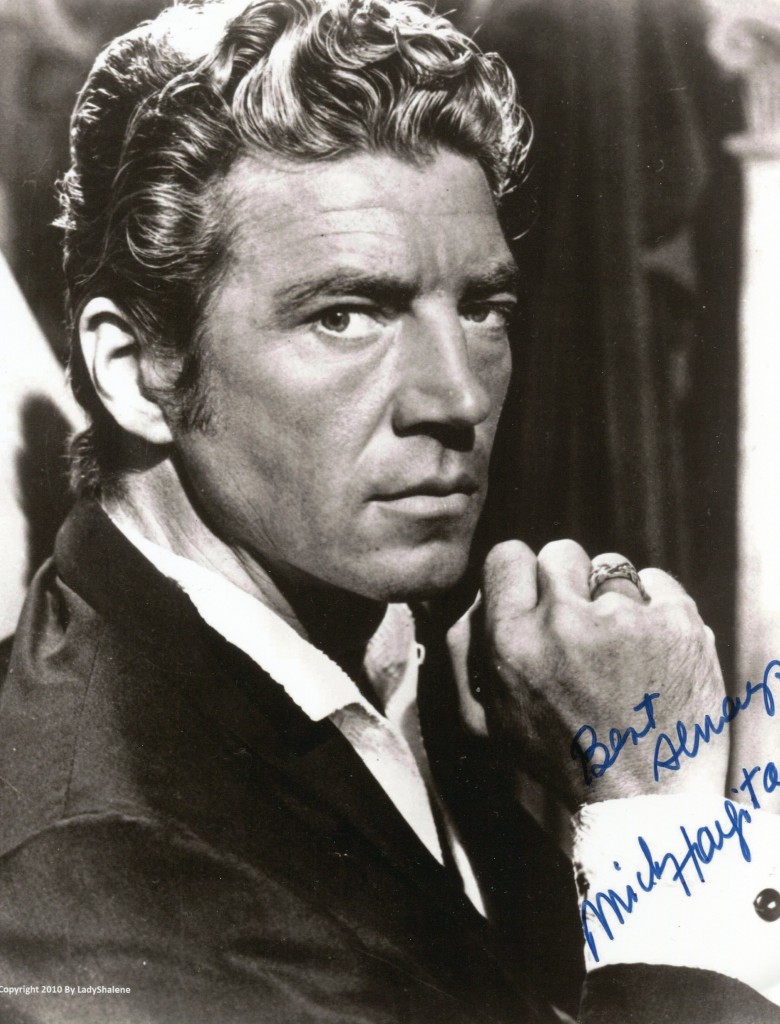


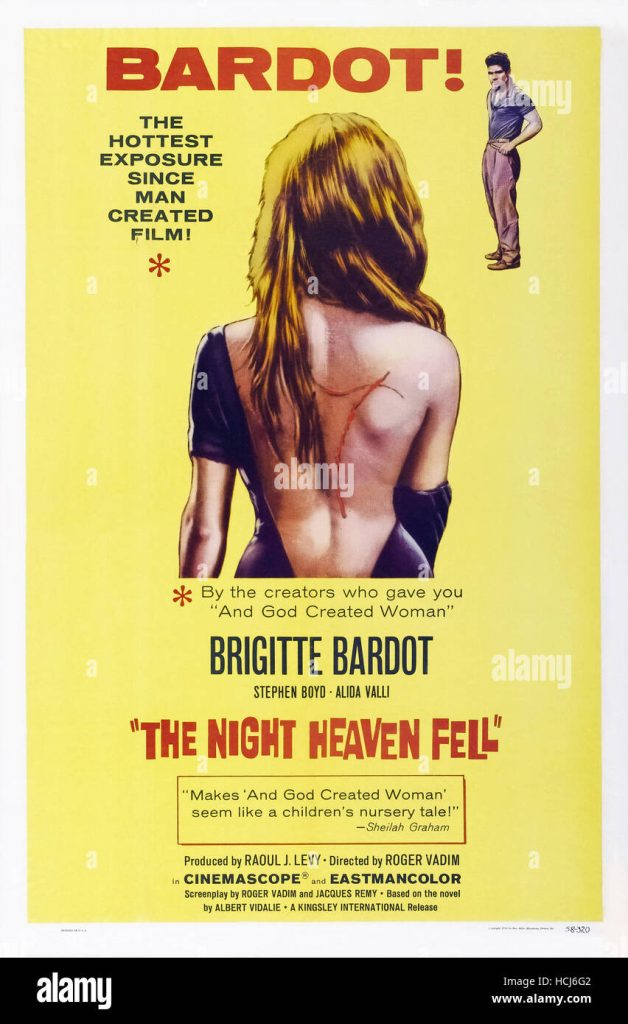
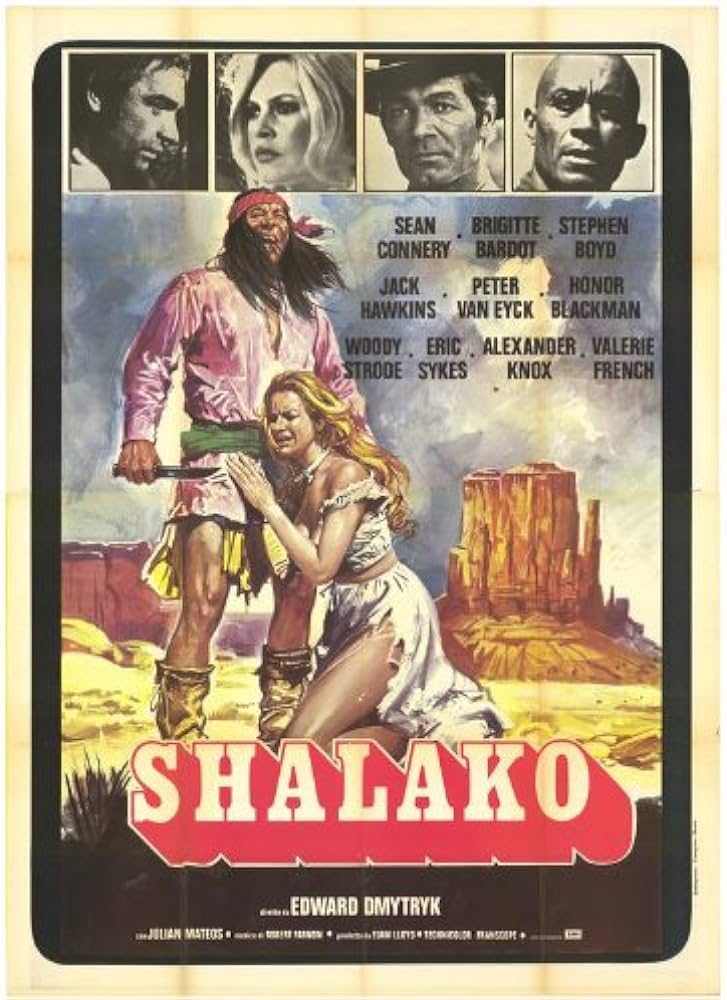


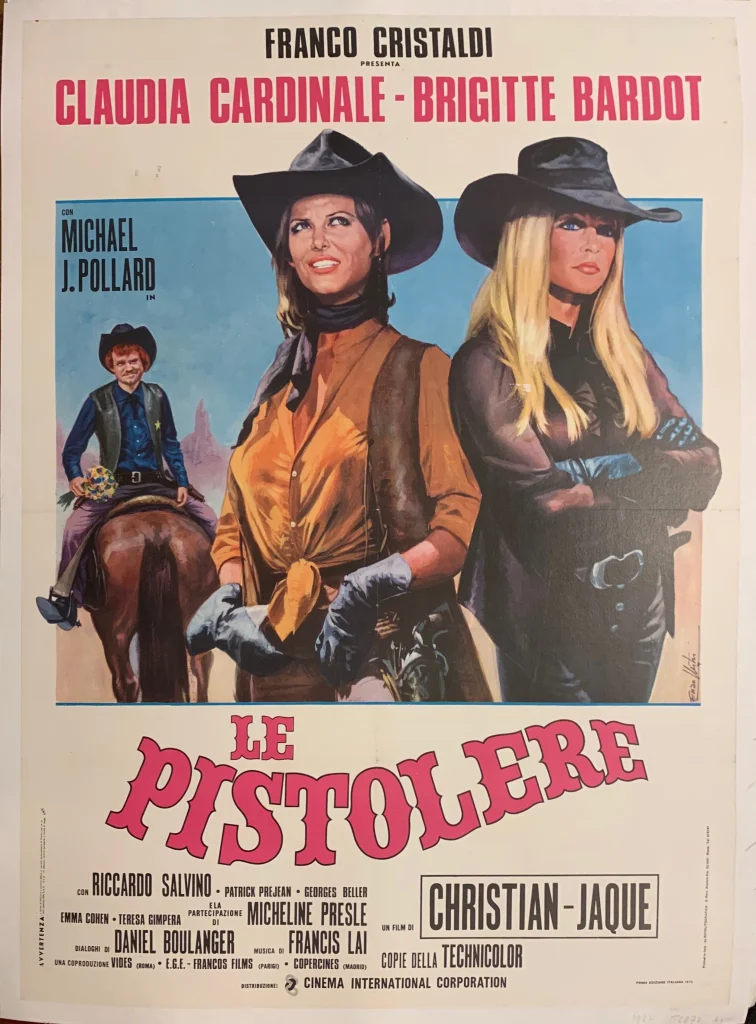

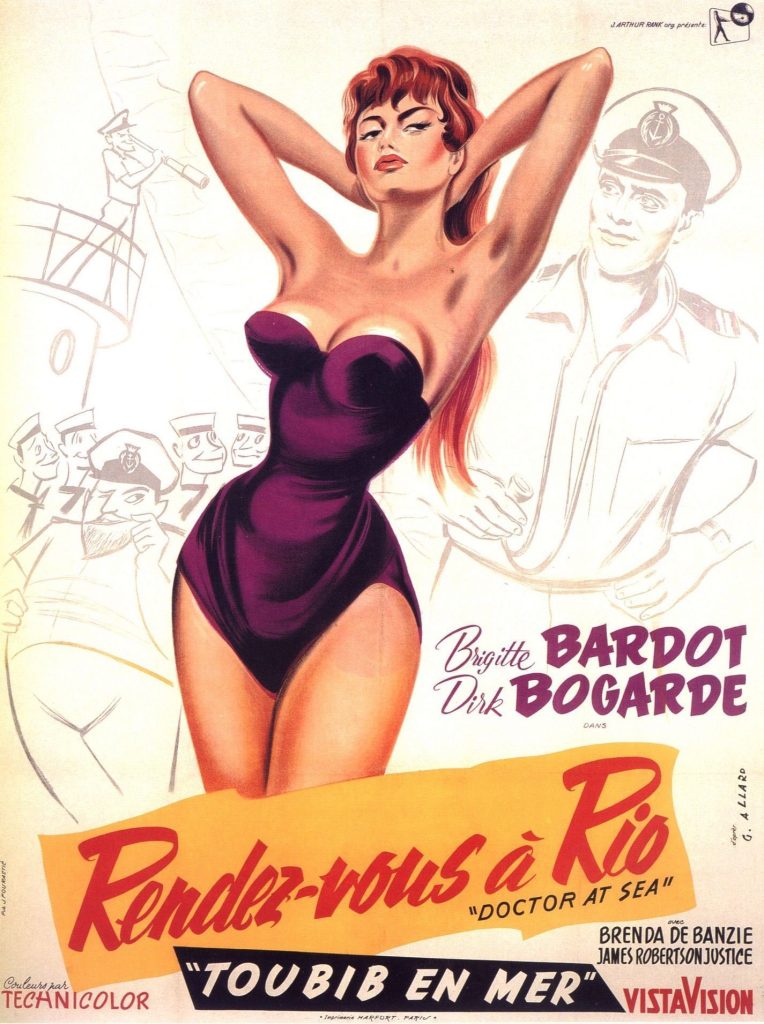

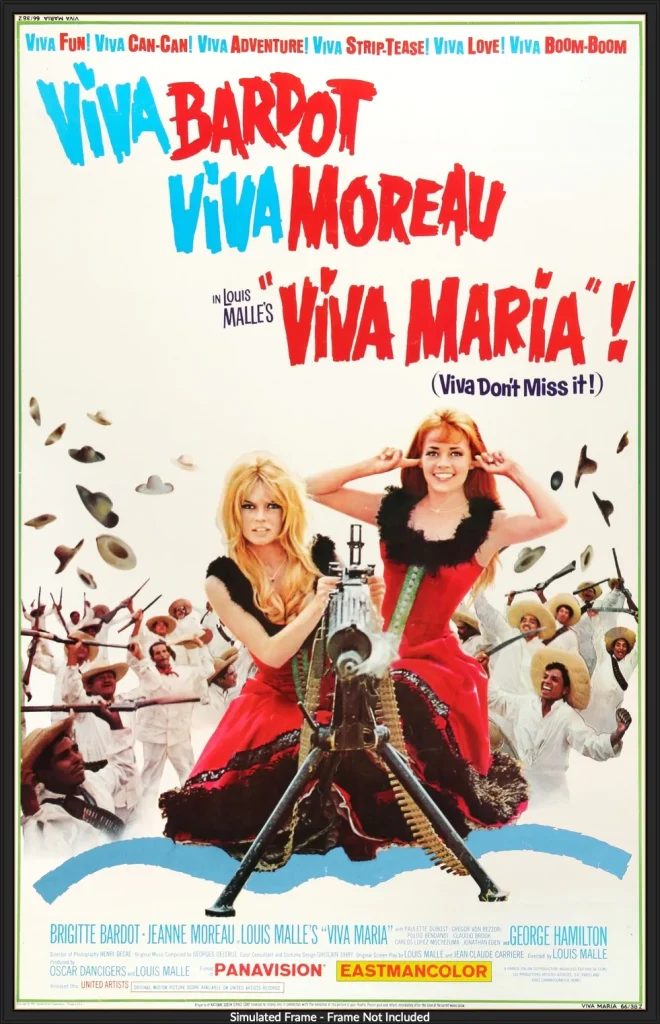
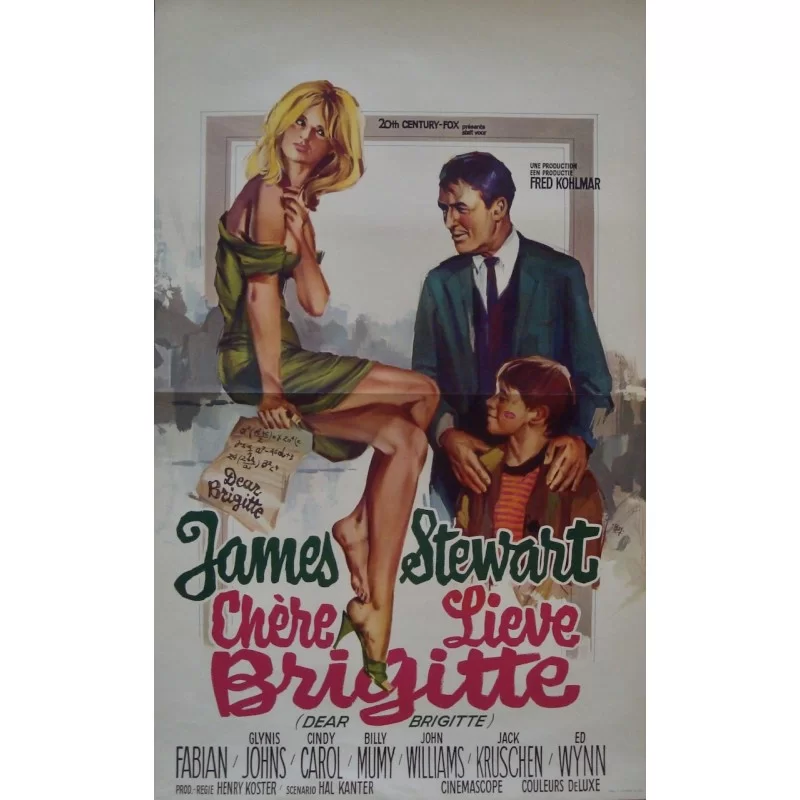


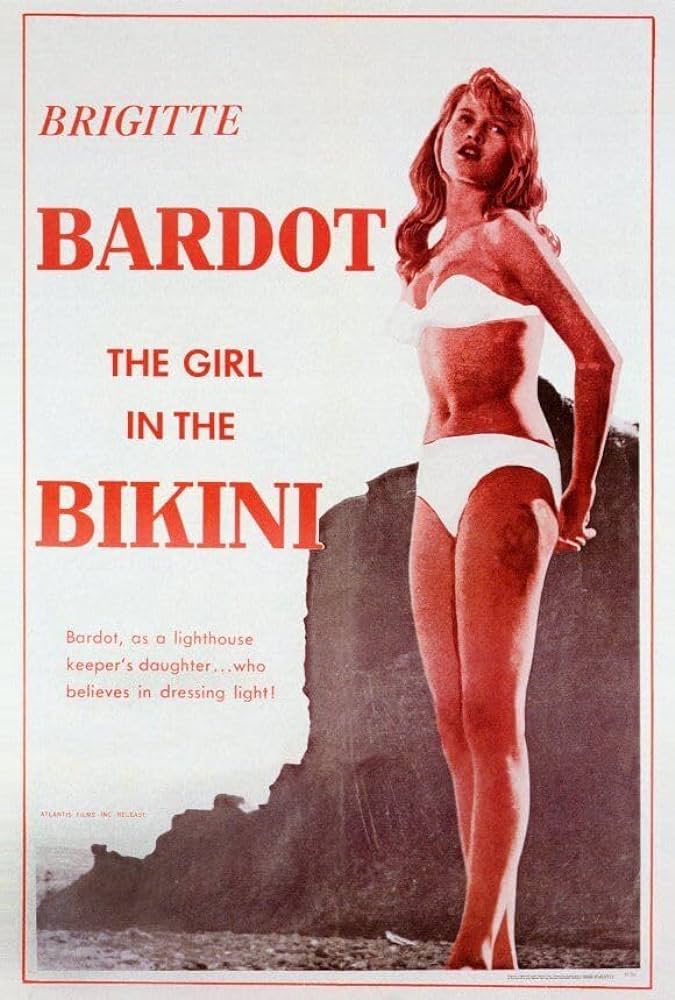

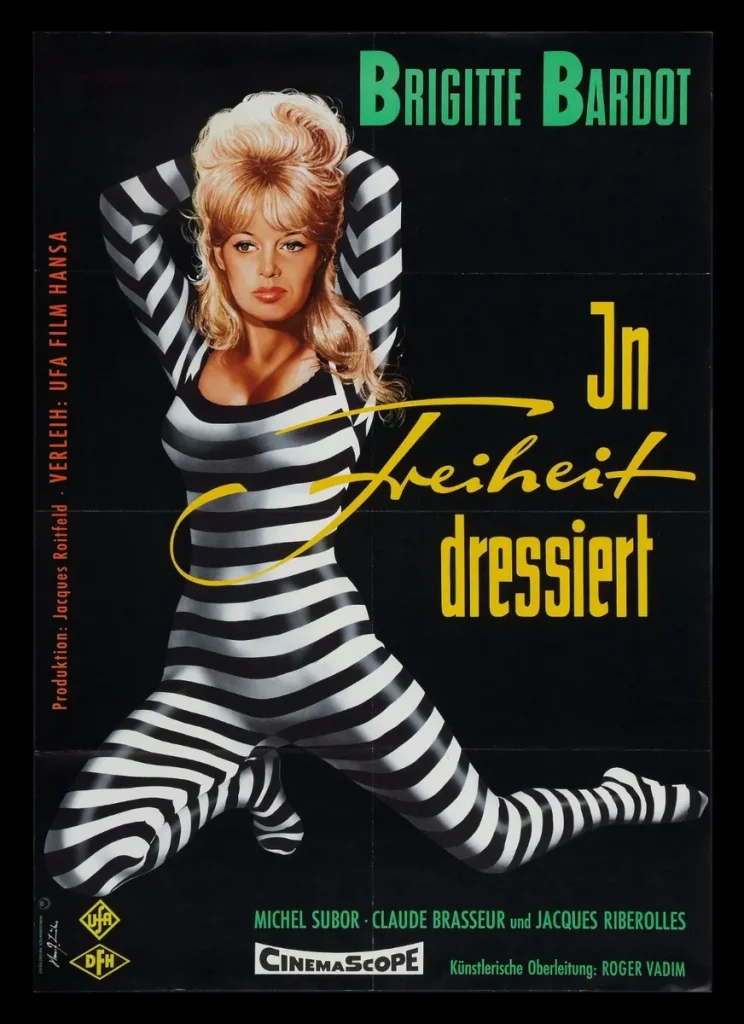
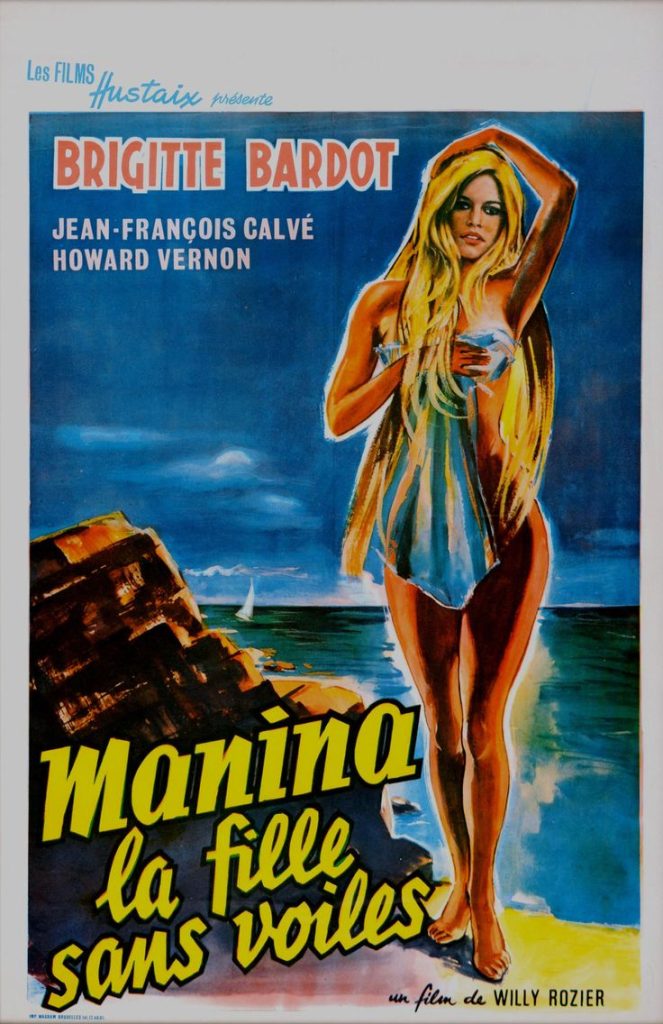





“People have heard of Brigitte Bardot who have never heard of any other French star. People have seen a Brigitte Bardot movie who have never seen any other French movie. When she rose to world prominence in 1956, she was the first non-Hollywood star ever to make it -and no one was more surprised than the French, becasue the French are always so sexy or sex obsessed or whatever. The French themselves were not originally especially turned on by Bardot but they were flattered to have a world star who belonged solely to their native film industry.The bourgeois did not like her and even fans failed to see her as a national treasure like the Lourve. She was not very good at acting – but then for most of the time she was about to make love or had just finished making it” -David Shipman in “The Great Movie Stars- The International Years”. (1972).
Brigitte Bardot was one of the icons on 1950’s international cinema. It is remarkable that that she managed to achieve this status while working primarily in French movies and never making a Hollywood film. She was born in Paris in 1934. She made her film debut in 1952 in “Crazy for Love”. She met the actor/director Roger Vadim who guided her career and he gave her the major role in “And God Created Woman” in 1956. Her other films iucluded “Docor at Sea” opposite Dirk Bogarde, “Babette Goes to War”, “Viva Maria” with Jeanne Moreau and “Shaliko” opposite Sean Connery. Her film career wound down in the 1970’s and she became a noted animal rights activist.
TCM overview:
With a coquettish allure like no other actress of her time, Brigitte Bardot became a member of a rare club – that of foreign-language stars who attain international success on the silver screen. The original sex kitten – a term actually coined for the French actress – Bardot’s sultry appeal made her a star in Europe in the 1950s. With the international success of “Et Dieu Crea la Femme” (“And God Created Woman”) (1956), Bardot became an international sex symbol. Credited with popularizing the bikini, Bardot’s uninhibited sexuality was unlike any American star of her era, save perhaps Marilyn Monroe. Bardot brought more to the film world than just sex appeal, however; her popularity proved to be a key factor in establishing a market for foreign films in English-speaking countries. Bardot would go on to age gracefully in her native land and become one of the most outspoken advocates of animal rights, proving she was always much more than a beautiful face and muse of inspiration for everyone from musicians to filmmakers to fashion designers. In fact, decades later, German supermodel Claudia Schiffer owed her entire career to Bardot, as she became the face of Guess, Inc. in the early 1990s, due simply to her amazing resemblance to the actress – proving the Bardot look of wild, cascading blonde hair and pouty lips would never go out of style.
Born Sept. 28, 1934 in Paris, France to Anne-Marie Mucel and wealthy industrialist, Louis Bardot, the future star was raised in Paris. Encouraged to study music and dance at an early age, Bardot focused on ballet, studying under Russian choreographer Boris Knyazev for three years; she was later accepted as a student of Paris’ Conservatoire National Supérieur de Musique et de Danse in 1947. At the age of 15, Bardot took up modeling, appearing in the fashion magazine Jardin des Modes and later landing the coveted cover of Elle in March of 1950. Bardot’s cover-shot caught the eye of young film director Roger Vadim who brought Bardot to the attention of his friend, director Marc Allégret. The model was soon offered an audition for Allégret’s film “Les Lauriers sont coupés.” Though Bardot landed the role, the film never went into production, but she had made a lasting impression on Vadim – the pair went on to marry in 1952, much to the dismay of Bardot’s parents who had tried to keep the couple apart until Bardot’s turned 18. Bardot made her film debut the same year in Jean Boyer’s comedy “Le Trou Normand” (“Crazy for Love”) (1952) and went on to appear in supporting roles in a number of French films thereafter.
Bardot went on to make her American film debut in “Act of Love” (1953) starring Kirk Douglas and went on to appear in Warner Brothers’ epic “Helen of Troy” (1956). Though she was offered a seven-year contract with the studio, Bardot declined and returned to France to film Marc Allégret’s “Futures Vedettes” (“Joy of Loving”) (1955). Next, Bardot appeared in the British comedy, “Doctor at Sea” (1955) and landed her first starring role in “La Lumiere d’en Face” (“Female and the Flesh” (1956). Still a rising star, Bardot next appeared in a number of popular French films including “Cette Sacree Gamine” (“Naughty Girl”) (1956), “Mi Figlio Nerone” (“Nero’s Mistress”) (1956) and Allégret’s “En Effeuillant la Marguerite” (“Plucking the Daisy”) (1956).
As Bardot’s career began to take off, Vadim was offered the chance to direct his wife in “Et Dieu Crea la Femme” (“And God Created Woman”) (1956). As the coy, sexy Juliette Hardy, an orphan whose beauty has caught the eye of all St. Tropez’s men, Bardot made the leap to international stardom. Exuding an uninhibited sexuality unlike any American actress of the time – even Monroe, who skewered more toward a babyish, dumb blonde persona – the film cemented Bardot’s status as a sex symbol worldwide. Though her career was at its peak, Bardot’s personal life had hit a low point. The actress had an affair with her “Femme” co-star Jen-Louis Trintignant and, inevitably, her marriage to Vadim ended in 1957, though Bardot and Vadim maintained a professional relationship long after. In spite of any personal issues, Bardot would never deny that it was Vadim who had discovered her and changed her life’s direction forever.
Now popular in America – a rare thing for a non-English speaking actress – Bardot was offered a reported $225,000 three-picture deal with Columbia. She starred in the French comedy “Une Parisienne” (1957) and followed it with the Vadim-directed “Les Bijoutiers du Clair de Lune” (“The Night Heaven Fell”) (1958). Bardot was next slated to appear opposite Frank Sinatra in the Vadim-directed “Paris by Night” but the project eventually fell through. She next starred in “Babette s’en va-t-en Guerre” (“Babette Goes to War”) (1959) opposite French actor Jacques Charrier, whom Bardot went on to marry that year.
With Charrier, Bardot gave birth to her first and only child, Nicholas-Jaques Charrier on Jan. 11, 1960 – an experience that Bardot did not enjoy. Her personal life again tumultuous – her marriage to Charrier was much publicized and the pair was constantly hounded by paparazzi – Bardot hit yet another low point emotionally. On her 26th birthday, she attempted suicide for the second time during production on Henri-Georges Clouzot’s crime drama “La Verite” (“The Truth”) (1960). Bardot completed the film, which became one of the highest grossing films in France the year it was released and was nominated for an Academy Award for Best Foreign Language Film. Bardot’s personal life proved to be less successful – her marriage to Charrier ended in divorce in 1962 and her son, Nicholas, was raised by the Charrier family following the divorce.
Attempting to get her life back on track and expand her creativity, Bardot branched out into a singing career in the 1960s, releasing the pop album Inside Brigitte Bardot in 1960, followed by Brigitte Bardot Sings in 1963. Bardot also collaborated on a number of popular singles with singer Serge Gainsbourg, whom she also dated. She continued to act as well, starring in ex-husband Vadim’s “Le Repos du guerrier” (“Love on a Pillow”) (1962) and opposite Marcello Mastroianni as a movie star hounded by the paparazzi in the somewhat autobiographical Louis Malle film, “Vie Privée” (“A Very Private Affair”) (1962). Knowing her sex kitten heyday was coming to a close, Bardot withdrew from the public eye for a brief time following the release of “Privée” but returned to the screen in 1963 to star in Jean-Luc Godard’s acclaimed “Le Mépris” (“Contempt”). For all of Godard’s acclaim as a filmmaker, “Mépris” received mixed reviews at the time of its release. Bardot continued to act, however, and went on to appear as herself in the American film “Dear Brigitte” (1964) starring James Stewart and in Louis Malle’s “Viva Maria!” (1965), opposite Jeanne Moreau.
Bardot’s box office appeal had been in slow decline for some time, with her next hit not coming until “L’Ours et la Poupee” (“The Bear and the Doll”) in 1970. After filming “L’Histoire très bonne et très joyeuse de Colinot Trousse-Chemise” (“The Edifying and Joyous Story of Colinot”) in 1974, Bardot retired from acting. Instead, she devoted the rest of her life to political causes – most notably, animal rights. In 1986, Bardot auctioned off a number of her own personal belongings to found the Brigitte Bardot Foundation – an organization devoted to the welfare and protection of animals. Outspoken about animal rights for many years,.






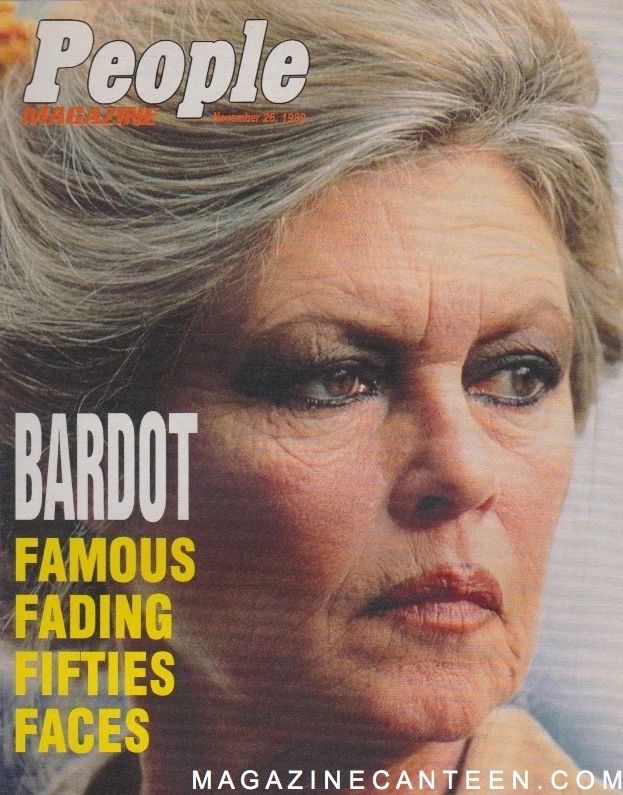


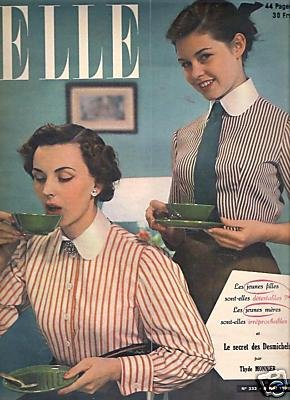

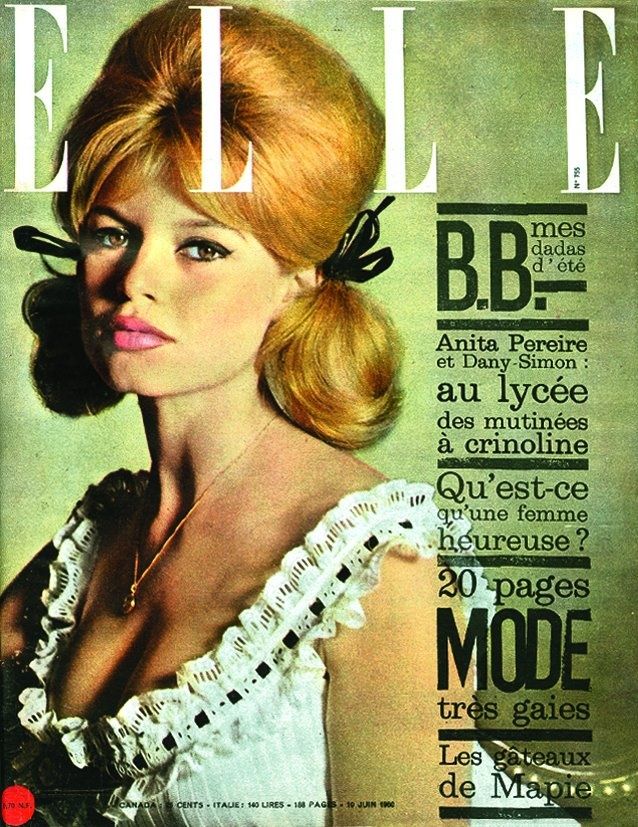

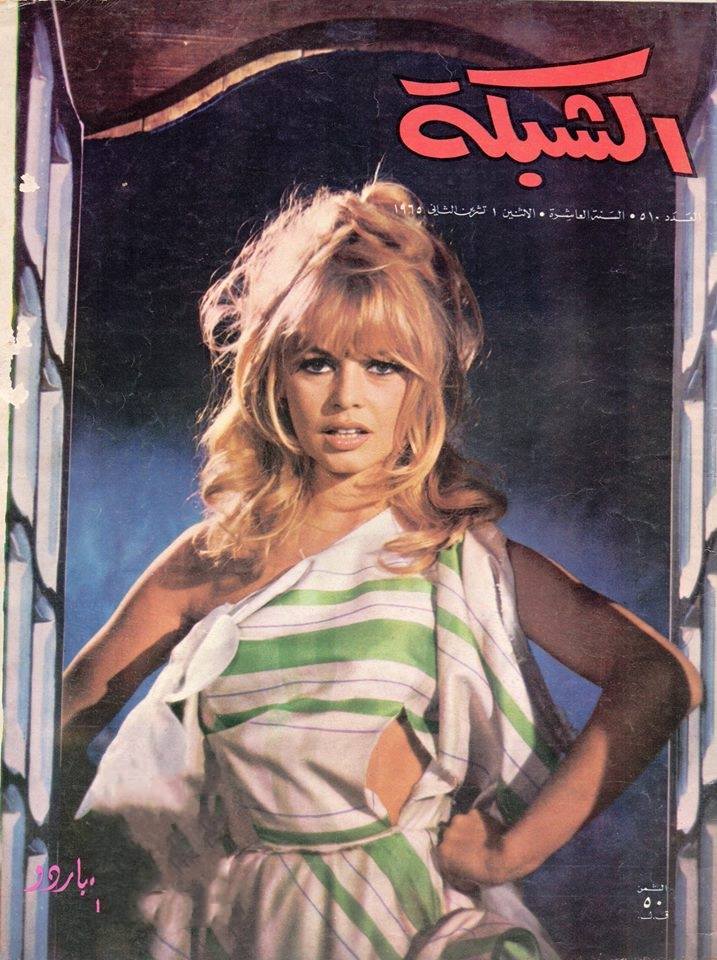
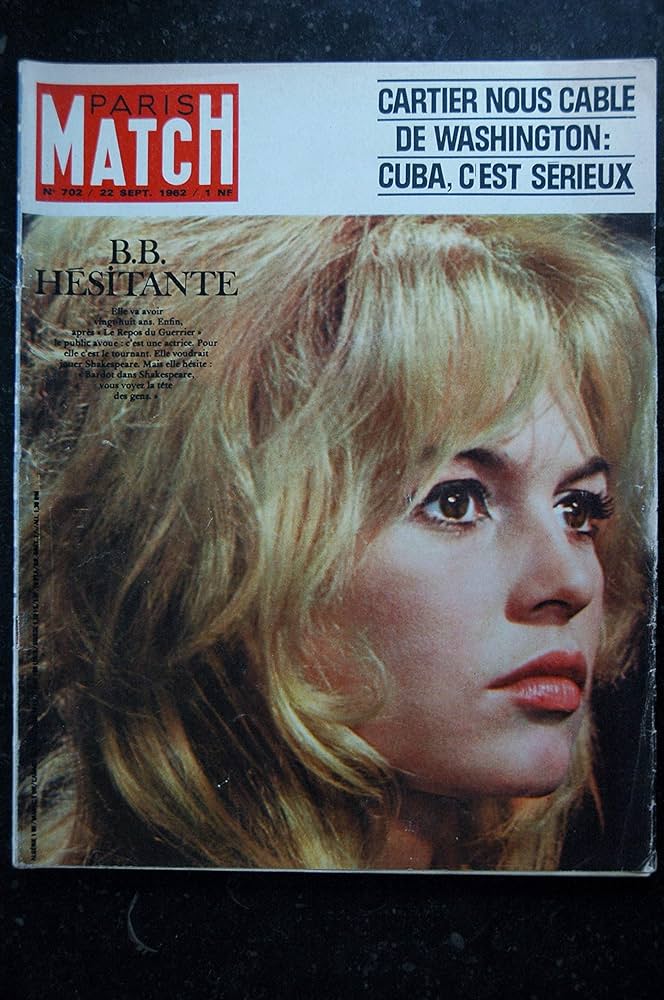
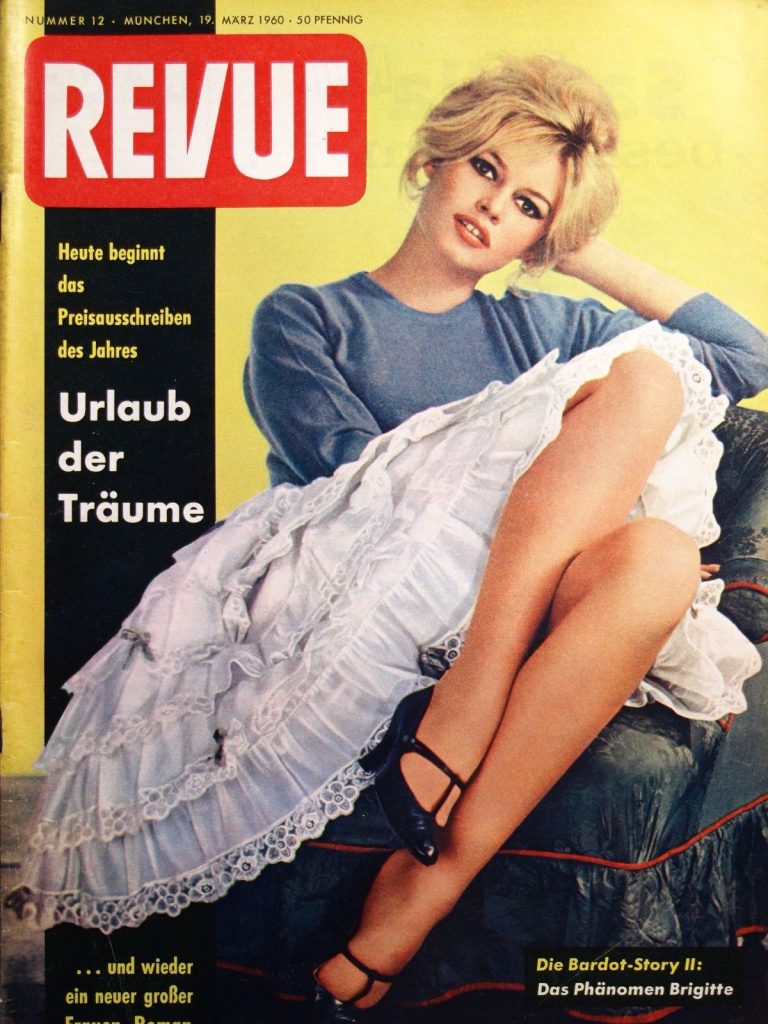
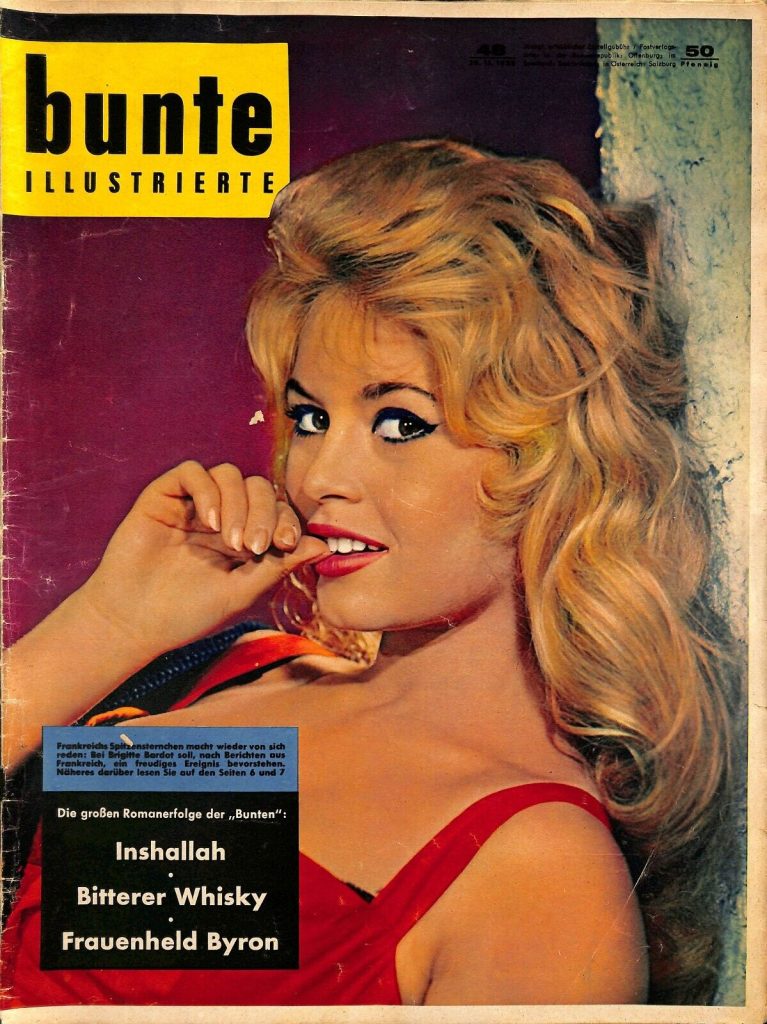
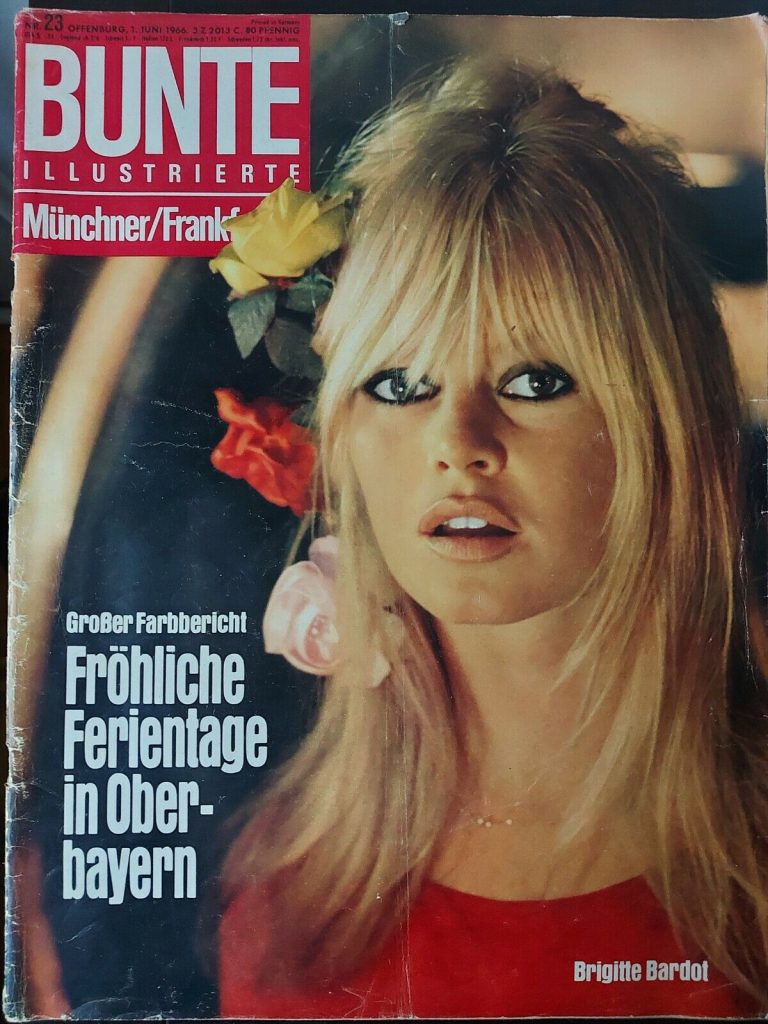
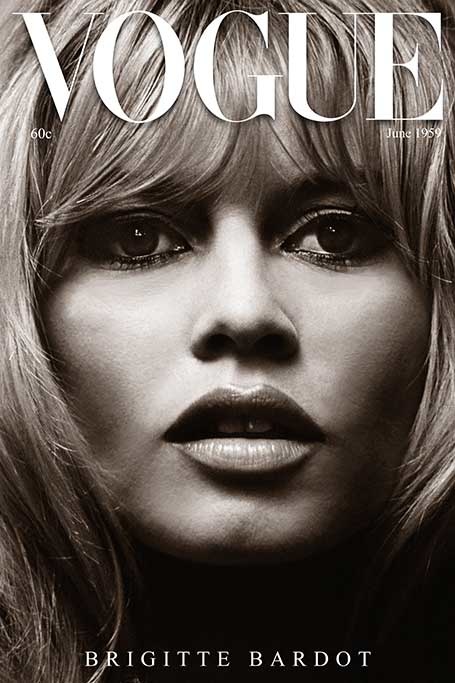
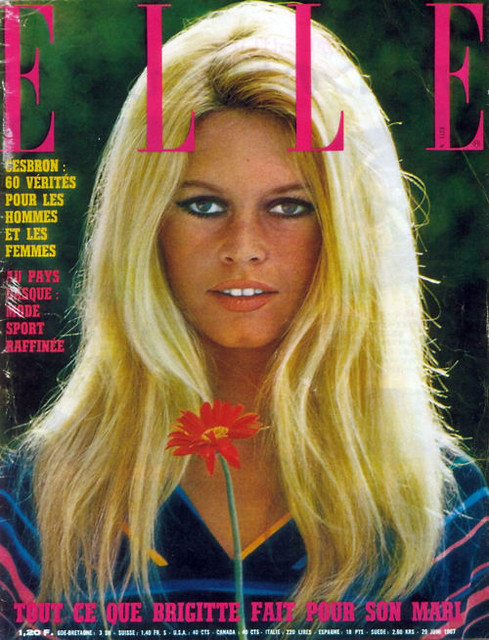




Haya Harareet was born in 1931 in Haifa, Palestine and was one of Israel’s best known actresses in the 1950’s. She came to international fame in 1956 with the movie “Hill 24 Doesnt Answer”. Her best known role came in 1959 as the lading lady of William Wyler’s “Ben-Hur”.
She starred opposite Stewart Granger in “The Secret Partner” which was made in England. In 1962 she went to the U.S, to make “The Interns”. She stopped making movies in 1964. She was long married to the great English director Jack Clayton who died in 1995.
IMDB entry:
Born in Palestine before the inception of the Israeli state in the city of Haifa, she first distinguished herself by winning one of the first beauty contests in the nascent Israel. Haya Harareet (also spelled Hararit) made her debut in Thorold Dickinson‘s film Giv’a 24 Eina Ona (1955) (“Hill 24 Doesn’t Answer”).
The landmark Israeli film, mostly in English, is also the first feature-length production to be shot and processed entirely in Israel, and made for international distribution.
The film was an official selection at the 1955 Cannes Film Festival and Harareet won an award for her role in the film. She plays Miriam Mizrahi, a fourth generation, dark-eyed and beautiful Sabra, working for the underground.
Best-known for her role as Esther, opposite Charlton Heston in William Wyler‘s film classic Ben-Hur (1959), she also played in Francesco Maselli‘s The Doll That Took the Town (1958) (“The Doll that Took the Town”) with Virna Lisi, _Edgar G. Ulmer”s Journey Beneath the Desert (1961) (“Journey Beneath The Desert”, AKA “The Lost Kingdom”)withJean-Louis Trintignant, and Basil Dearden‘s The Secret Partner (1961) with Stewart Granger. She cowrote the screenplay for Our Mother’s House (1967) which starred Dirk Bogarde.
Ms. Harareet was also credited as a presenter for ‘Best Special Effects’ at the 32nd Annual Academy Awards in 1960.
The above TCM overview can also be accessed online here.
She was married to the British film director Jack Clayton until his death in 1995.
– IMDb Mini Biography By: Dann
When William Wyler was searching for a female lead for his biblical epic Ben-Hur, his mind turned back to a beautiful young Israeli actress he had met two years earlier at the Cannes Film Festival.
He had already cast the title role but was struggling to find the right actress to play Charlton Heston’s love interest, Esther. More than 30 names were considered, including Ava Gardner and Carroll Baker. None of them seemed right, and then the director remembered the little-known Haya Harareet.
Wyler had come across her at Cannes in 1955 when Hill 24 Doesn’t Answer, in which she starred, had been nominated for the Palme d’Or. Directed by Thorold Dickinson, the film did not win but had its own place in history as the first feature-length production to be shot and produced in Israel for international distribution. Harareet shone in the film as a young Jewish woman working for the underground during the war for Israeli independence. When Wyler met her at a reception at one of the swanky hotels on La Croisette overlooking the Mediterranean, he was impressed by her sultry looks and her sharp intelligence.
Two years later Wyler could not remember her name but ordered his production team to “find that Israeli girl I met in Cannes”. It took them weeks to track her down to Paris, where she was living, and when she arrived in Rome, where filming was due to start, he gave her the part on the strength of a 30- second screen test. She also signed a four-year contract with MGM, becoming the first Israeli actress to be taken on by a Hollywood studio.
She might easily have got lost in the epic grandeur of Ben-Hur. The movie cost $15 million to make and at the time was the most extravagant production in cinema history. The set for the film’s climactic chariot race alone covered 18 acres, was five storeys high and took six months to build. More than 300 actors had speaking parts and the film deployed 10,000 extras, not to mention more than 200 camels and 2,500 horses.
Yet Harareet was not overawed and Wyler coached a career-defining performance from her. Variety hailed the emergence of “a performer of stature” and continued: “Her portrayal of Esther, the former slave, is sensitive and revealing. She has a striking appearance and represents a welcome departure from the standard Hollywood ingénue”. The review also gave Wyler “considerable credit for taking a chance on an unknown”.
The film was banned in several Arab countries because of Harareet’s nationality but Ben-Hur was a box-office smash and became the biggest grossing film since Gone with the Wind. Adjusted for inflation, the film made $1.8 billion and to this day sits in the list of the top 20 money-spinning movies of all time. The film also garnered 11 Academy awards, a record until it was equalled by Titanic four decades later.

Harareet at the Cannes film festival in 1960
Harareet became an overnight sensation and was photographed with Heston on the red carpet at glittering premieres in New York and Los Angeles. When she arrived in Britain for the European premiere she noted with satisfaction that the bathroom of her suite at Claridge’s was larger than the entirety of the cramped lodgings she had occupied when living in London several years earlier.
Yet the epic scale of the movie came at a cost. The film’s producer had a heart attack on set and died, and the production supervisor was also forced to retire with stress-related heart problems. Harareet’s health survived the rigours of the nine-month shoot but her career did not. Despite a sheath of press cuttings hailing her as “Hollywood’s brightest new star”, she felt Ben-Hur had typecast her as an “exotic beauty”.






I’m an actress who played the part of Esther. But that doesn’t mean I have to go on playing her for the rest of my life,” she complained. The roles she was offered on the back of Ben-Hur were “boring” and MGM wouldn’t allow her to “grow up”.
To negotiate her escape, she drew the studio’s attention to her friendship with left-wing socialists. “You don’t want to be associated with a communist, do you?” she told the studio provocatively. In truth she had never been a party member but the stink of McCarthyism still lingered in Hollywood. The ruse worked and she was released from her contract.
She was also keen to leave for another reason. At the 1960 Academy awards she met the British director Jack Clayton, whose film Room at the Top was up against Ben-Hur for several awards. It was love at first sight. The following morning he delivered 1,000 roses to her hotel room and as soon as her MGM contract was cancelled she moved to Britain to live with him.
They subsequently married and lived together in leafy Buckinghamshire until Clayton’s death in 1995. They were inseparable for 35 years.
She was cast opposite Stewart Granger in the British-made thriller The Secret Partner in 1961 and appeared in one more Hollywood movie, playing a single mother training to be a doctor in David Swift’s 1962 feature The Interns. After abandoning acting she wrote the screenplay for her husband’s 1967 film Our Mother’s House starring Dirk Bogarde and at the age of 40 took a degree in political science at the London School of Economics. A previous marriage to Nachman Zerwanitzer, an irrigation engineer, ended in divorce before she left Israel.
Haya Neuberg was born in 1931 in Haifa, in what was then the British mandate of Palestine. Her parents, Reuben and Yocheved Neuberg, were Jewish immigrants from Poland. At school she was given the name Hararit (later changed to Harareet), which means “mountainous” in Hebrew.
At 17 she left home without parental approval to join the Israeli Defence Forces’ equivalent of Ensa, entertaining those fighting in the 1948 Arab–Israeli war. She also won one of the first beauty contests held in the newly formed state, which helped to launch her career as an actress at the Cameri theatre in Tel Aviv.
She left Israel in 1956 for Italy, where she befriended the directors Federico Fellini and Michelangelo Antonioni, who taught her Italian during long weekends on the island of Capri. From there she moved to London and then Paris, where she learnt French well enough to appear on the stage before Wyler tracked her down.
She made annual trips to Israel to see her family before finally returning one last time, having asked for her ashes to be scattered in the land of her birth.
Haya Harareet, actress, was born on September 20, 1931. She died in her sleep on February 3, 2021, aged 89















Sarita Montiel was born in 1928 in Spain. In 1954 she starred in the U.S movie “Vera Cruz” opposite Gary Cooper and Burt Lancaster. Her other films include “Serenade” with Mario Lanza and Joan Fontaine and “Run of the Arrow”. She was married to the late great film director Anthony Mann. She died in 2013.
“Independent” obituary by :Alasdair Fotheringham
Sara Montiel is widely considered one of Spain’s greatest female film stars of the 20th century: but it is perhaps more for what she managed, with huge skill, to come to symbolise than for her artistic output that she will be remembered long-term
It is true that she was the first Spanish actress to conquer Hollywood in the 1950s, acting alongside Burt Lancaster and Gary Cooper – and her beauty helped her gain a trail of lovers and husbands that ranged from Hemingway (who taught her to smoke cigars) to the film director Anthony Mann.
But for the vast majority of Spaniards during Franco’s era, Montiel simply represented everything that seemed completely unimaginable: international glamour, ridiculous affluence, and a voluptuous feminine sexuality that did not give two hoots for the country’s repressive social mores. As La Vanguardia newspaper put it in its obituary, “In an era of black shawls and hard bread, she kept us in touch with the times.”
Montiel’s fame in Spain reached the point where for over two decades her plunging necklines, richly erotic deep voice and sensual singing of cuplés – a type of popular, often romantic song – in a series of otherwise forgettable movies acted as a kind of pressure valve for censor-bound Spanish society.
El Último Cuplé (“The Last Cuplé”, 1957), a low-budget film which combined cuplés with the classic contemporary Spanish movie format (femme fatale plus willing-to-be-seduced bullfighter plus bullfighter’s morally pure bride-to-be, equals sweeping melodrama) was the biggest of her box-office smashes. Its title song, “Fumando Espero” (“I wait whilst smoking”), recorded in a voice that the producer insisted Montiel made so husky and low she protested she would end up sitting underneath the piano, remained a major hit for years afterwards.
But as much as what she did or how she looked, what fascinated Spaniards was who she knew – which in 1950s Hollywood was just about everybody. In the last photo of a living James Dean, he is next to Montiel, both of them laughing. Friends included Elizabeth Taylor, Billie Holiday and Brando.
Her list of lovers, affairs and broken hearts stretched from Dean (whose fatal car crash happened after “an afternoon of love” with her, or so she claimed), to playwright Miguel Mihura, Indalecio Prieto, one of the top ministers in the former Spanish Republic, and even the 1959 Nobel Prize-winning biologist, Severo Ochoa. (Montiel described him as “the great love of my life… but him researching all day and me making films all day just didn’t match.”)
For ordinary Spaniards, another appealing side of Montiel was her working-class background. Montiel was born and brought up in Campo de Criptana, a tiny town on the empty plains of central Castille, before moving to the Valencian coast as a teenager. Her father’s income was so meagre as a field worker, she later claimed that she would dig up roots to eat. (If this recalls Scarlet O’Hara grubbing for potatoes in Gone with the Wind, then it would not be the first or last time that fact and fiction blurred in her life.)
Discovered when singing a religious song by film producer Vicente Casanova in 1944, aged 15, her first film was Te Quiero Para Mí (“I Want You for Me”). Six years and 14 films later, including successes like Locura de Amor (“The Madness of Love”, 1948), she started working in Mexico, performing mostly singing roles. Piel Canela (1953), in which she played a gangster’s moll in a Havana nightclub, saw her shoot up the ladder to Hollywood’s top circle of film stars, despite not speaking a word of English – the first Spanish actress ever to do so.
Together with Gary Cooper (with whom she had a much-publicised romance) she took part in the Western Vera Cruz (1954) and then, while playing a secondary role in Joan Fontaine’s Serenade, she met and fell in love with Anthony Mann. Their wedding, as it was a civil one, was downplayed in Franco’s Spain, as was the divorce in 1961 – in stark contrast to when she married Spanish businessman Jose Vicente Ramirez in 1964 in a massive Catholic church ceremony. (The fact that it only lasted a couple of months before they separated was discreetly ignored).
By then, her cachet as a sex symbol had mushroomed thanks to El Último Cuplé, which kicked off a series of films – La Bella Lola (“Beautiful Lola”, 1962), Noches De Casablanca (“Casablanca Nights”, 1963), La Dama de Beirut (“The Lady of Beirut”, 1965) – which, if unremarkable in their content, gave Montiel a vast following of fans in Spain.
The end of the dictatorship in 1975, though, meant that her appeal suddenly shrank; but Montiel made the perfect sideways move. She began a seemingly interminable series of TV chat show appearances, while well-timed interviews with “intimate revelations” in gossip magazines kept her star from fading.
As if that were not enough, she wrote biographies with suggestive titles like Sara and Sex (2003); sung rap music in her seventies; and, in 2002, married a Cuban film producer 36 years her junior – all of which helped to ensure that she maintained a certain presence.
“I am not your ‘typical woman’,” she said last year. “Not at all. I am 84 and I don’t have a lot of time left. But in the last 54 years there’s been nobody like me.”
The above “Independent” obituary can also be accessed online here.















Anyone who knows me are aware that I am a bit of a movie buff. Over the past few years I have been collecting signed photographs of my favourite actors. Since I like movies so much there are many actors whose work I like.